
2012 London Olympic Torch Route: Week 7 Sights
2012 London Olympics torch run
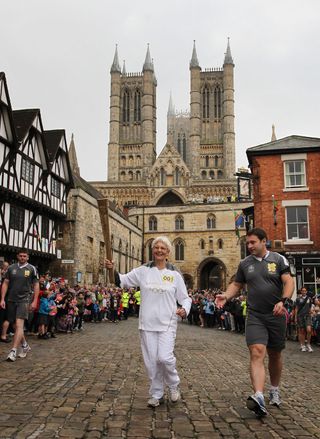
The 2012 London Olympics games are less than a month away! The torch that will bring the Olympic flame to the Olympic Stadium has run has already visited much of the United Kingdom, including Cornwall, Wales, and Northern Ireland and Scotland, but there are still plenty of amazing sites left along the relay route.
OurAmazingPlanet will be taking you on a sight-seeing journey along with the torch week-by-week until the beginning of the Games of the XXX Olympiad, which runs from July 27 through Aug. 12, 2012. For week 7, the torch passes by ancient castles and the home of William Shakespeare. So come along with us, and make sure to come back to see where the torch goes next!
(See sights along the torch route from last week. Pictured above is torchbearer Dorothy Fraser carrying the torch outside Lincoln Cathedral at the beginning of Day 41.)
Staffordshire Hoard Day 43
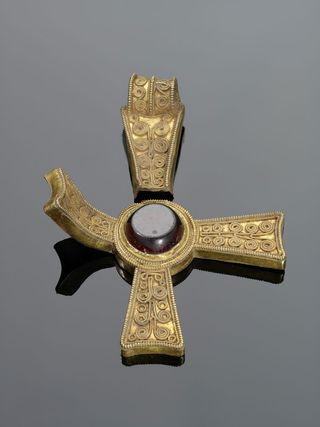
In 2009, Terry Herbert made an astonishing discovery in a field outside of Lichfield, Staffordshire, England with just his metal detector. Buried in the ground were more than 3,500 items of gold and silver with precious stone decorations the largest hoard of Anglo-Saxon precious metalwork ever discovered.
The pieces, of extremely high quality craftsmenship, are all war-related materials, mostly parts of swords. They date from the sixth century to the early eighth century, around the time of the Kingdom of Mercia, one of the largest and most aggressive kingdoms in Britain's history. Experts think that the pieces may have been stripped by victors in battle from their vanquished foes, but why they were buried is a mystery.
The pieces feature inscriptions, filigree, animal decorations and garnets. The entire hoard has been valued at
Stratford-upon-Avon Day 44
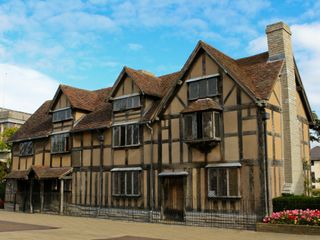
At more than 800 years old, the town of Stratford-upon-Avon has plenty of history, but none more famous that its being the birthplace of William Shakespeare.
Because of this connection the town naturally attracts plenty of tourists and has several Shakespeare-related landmarks.Shakespeare's Birthplace is where the poet and playwright was born, grew up and spent the first five years of his married life with his wife, Anne Hathaway. The home also doubled as the workshop of his father, who was a glove maker.
His wife's family home, now called Anne Hathaway's cottage, is where Shakespeare courted his future wife. The thatched roof cottage includes many original pieces of the family's furniture, including the Hathaway Bed, dating from Anne's time.
New Place is the house that Shakespeare bought after he was an establish playwright and was the second biggest house in Stratford at the time. He died there in 1616.
Warwick Castle Day 44
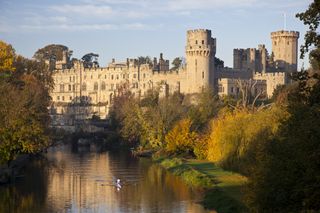
The first castle to appear on the site of the present-day Warwick Castle was a motte-and-baily one built by William the Conqueror in 1068. Stone replaced the wood and earth in 1260.
Two of the castle's towers and its dungeon were built in the 14th century. Visitors can tour the castle, including these aspects, as well as various bedrooms and the Great Hall, which features a huge cauldron that is about 500 years old and was used to cook stew for the castle's soldiers.
Queen Elizabeth I visited the castle in 1572 and Queen Victoria in 1858. A fire damaged the castle in 1871.
Norwich Castle Day 47
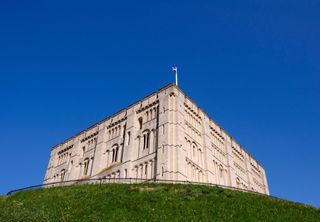
Norwich Castle was founded by William the Conqueror around 1067. The Normans demolished nearly 100 Saxon homes to build the earthworks around the original wooden fort.
Though it was intended to be a royal palace, no Norman king ever lived in the castle. From the 14th century until the end of the 18th, the castle was used as a county jail. It opened as a museum in 1894 and was refurbished at the beginning of the 21st century.
The keep of the castle was built with limestone imported from France. Visitors can walk in through the Bigod Arch, the original entrance of the palace. The keep feature stone carving, a 900-year-old staircase and five toilets each with four berths. Prisoners left graffiti on the castle that can still be seen.
The castle museum also contains an array of Anglo-Saxon artifacts (the Angles and the land of East Anglia are where England got its name).
The Broads National Park Day 48
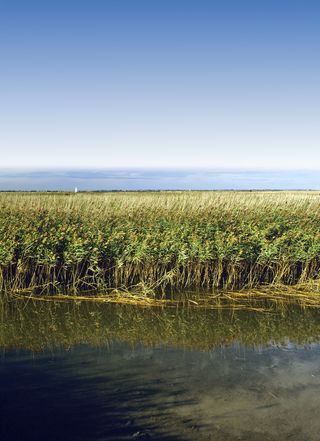
The Broads are a tapestry of wetlands, shallow lakes and rivers in the English counties of Norfolk and Suffolk. The protected area, which has a status on the level of a national park, covers about 115 square miles (300 square kilometers). The area was much shaped by humans over the centuries, through wetland reclamation and animal grazin.
Six rivers the Ant, Thurne, Bure, Yare, Chet and Waveney connect the shallow lakes of the Broads (themselves referred to as broads). Boating is naturally a major pastime and way of life in the region.
The Broads has a variety of habitats and supports a range of wildlife and is particularly renowned for the large number of bird species found there.
Medieval churches, castles and their ruins, and the ruins of Roman forts can also be found throughout the area.
Colchester Day 49
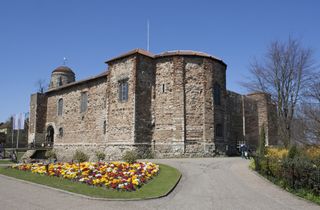
Colchester boasts of being Britain's oldest recorded town, as it was referred to by Pliny the Elder in AD 77 as Camulodunum, the pre-Roman name for the settlement.
The Roman fortress there gave rise to a civilian settlement called Colonia Claudia, named for the Emperor Claudius, who led his troops into the area. The settlement was the first Roman capital of Britainnia. Remnants of the Roman defensive wall can still be found, remains of the only known Roman Circus in Britain was discovered in 2004 to the south of the town.
The earliest known Christian Church in Britain, dating from the 4th Century, was uncovered in Colchester.
Colchester Castle was the first and largest Norman keep built according to the castle museum site building on it likely began in 1076. The castle was built on the site of the ruined Temple of Claudius.
Sign up for the Live Science daily newsletter now
Get the world’s most fascinating discoveries delivered straight to your inbox.

Andrea Thompson is an associate editor at Scientific American, where she covers sustainability, energy and the environment. Prior to that, she was a senior writer covering climate science at Climate Central and a reporter and editor at Live Science, where she primarily covered Earth science and the environment. She holds a graduate degree in science health and environmental reporting from New York University, as well as a bachelor of science and and masters of science in atmospheric chemistry from the Georgia Institute of Technology.









